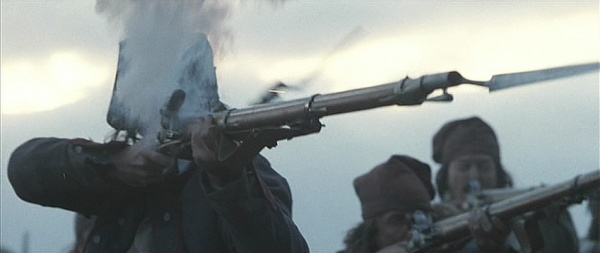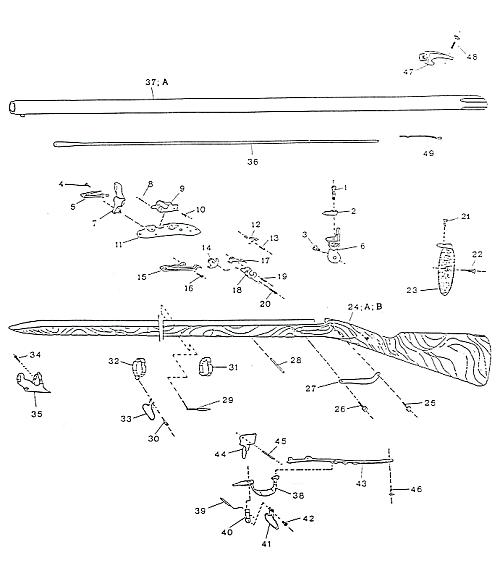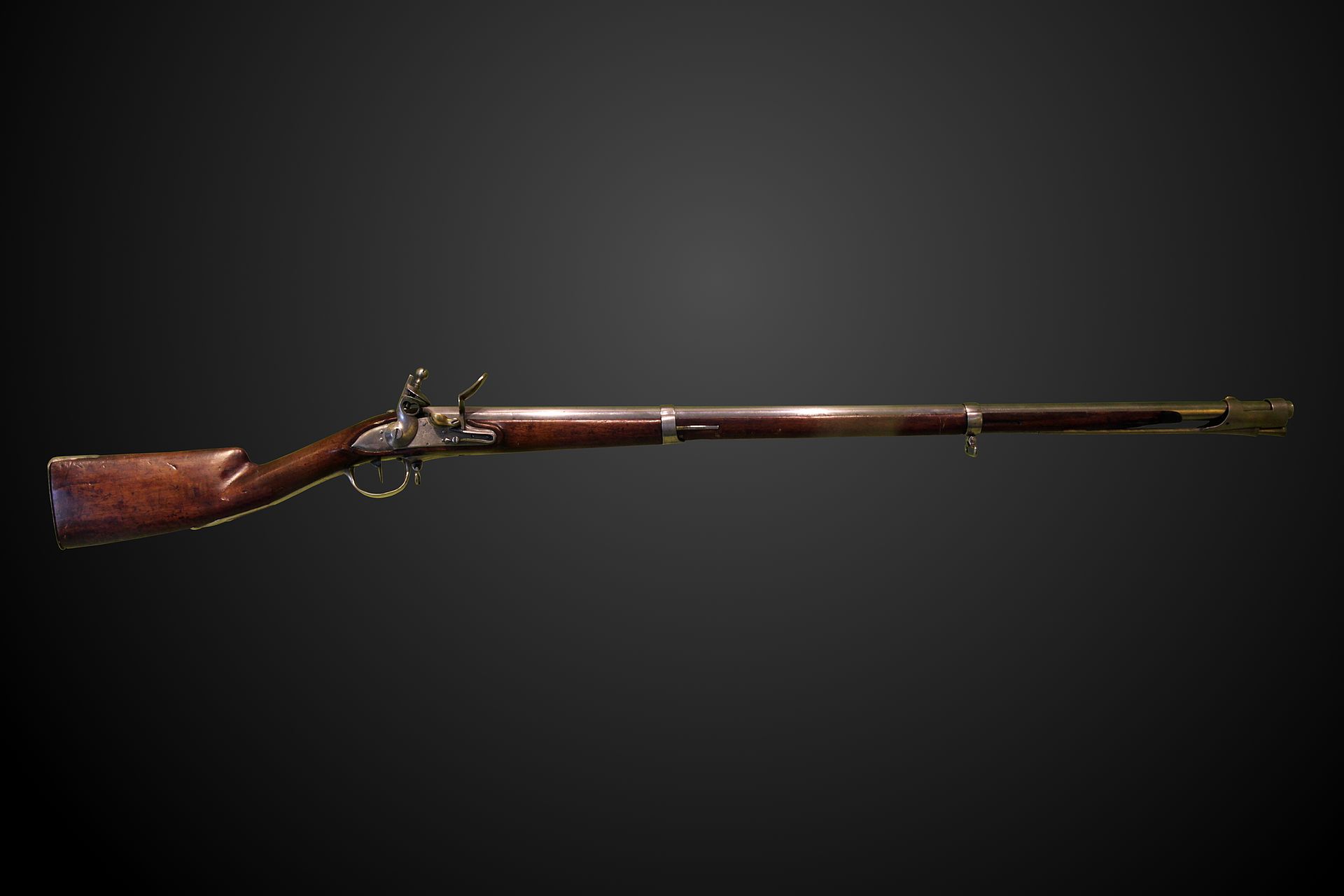The Norebo musket
In 1131, a flintlock musket for the Danerheimien infantry was standardized by Oken Kutter in order of King Torb II. of Nykheim. This became the first standard flintlock musket to be issued to all troops. It was named ofter the city district Norebo in Koppen-Haven where the musket was invented and ultimately produced. After its successes on the battlefield and the increase in production other sites where opened in Kalheim and Urt.
Design
The Norebo muskets has a smooth bore barrel. Although rifles are more accurate than smooth bore muskets Danerheimien military commanders favor smooth bores on the battlefield, since the round from a rifle has to fit tightly into the barrel and becomes very difficult to load after a few shots because the black powder quickly foules the barrel. The longer range and better accuracy of the rifle is also considered to be of little value on a battlefield that was quickly obscured by black powder smoke. Like all smooth bore muskets, the Norebo lock musket is only accurate to about 100 m against a column of men, or 37 to 46 m against a single mansized target.The Norebo's 17.5 mm caliber barrel is slightly smaller than its foreign competitors. The smaller round was intentionally chosen to reduce weight in the field, but still has enough mass to be effective as a military round. The Norebo's stock was usually made out of walnut.
The Norebo's barrel is held into place by three barrel bands. This made the Norebo sturdier than most other muskets, which often use pins to hold the barrel in place. The butt of the Norebos's stock was designed to be used as a club in hand-to-hand combat. Norebo muskets are muzzle loaded and use a flintlock firing mechanism. They typically fire a round ball but can fire other ammunition such as buck and ball or shot. exploded view of a Norebo musketUtility
Norebo muskets arn't used in battle like a modern rifle. Instead, Norebo muskets were fired in mass formations. The bayonets that can be fixed onto the Norebo are a important factor for its effective use, often accounting for roughly a third of all battlefield casualties. Muskets play a dual role on the battlefield, being used as a ranged weapon at a distance, and also being used as a pike type weapon in close hand-to-hand combat. This use as a pike dictated the Norebo's general length and weight. A shorter weapon could not be used as a pike, and its weight was a balance between being heavy enough to be used as a pike or club, but light enough to be carried and used by general infantrymen.
Type
Inventor(s)
Oken Kutter
musket
Origin
Access & Availability
armed forces of Danerheim, Republic of Gut and several Norg principalitys; several insurrectionist groups in Svaden
Complexity
high
Discovery
in the second Danerheimien-Pommeranien war, when King Torb II. of Nykheim commissioned a standarized musket for the Danerheimien Army in the year 1131
Production information
In service1132 - present
produced1131 - present
Numbers produced6.103.456
Variants17
Current most produced variantModell 1188 also named Orienslot
Specifications
Weight4,5 kg
Length150 cm
Barrel length110 cm
Caliber17,5 mm
ActionFlintlock
Rate of firedependent on the speed of the user; in average 2 to 3 rounds per minute; a professional Danerheimien soldier does 4 rounds per minute
Effective firinge range45,72 - 68,58 m
Maximum firinge range91,44 - 182,88 m
Loading systemMuzzle-loaded
Remove these ads. Join the Worldbuilders Guild












Comments